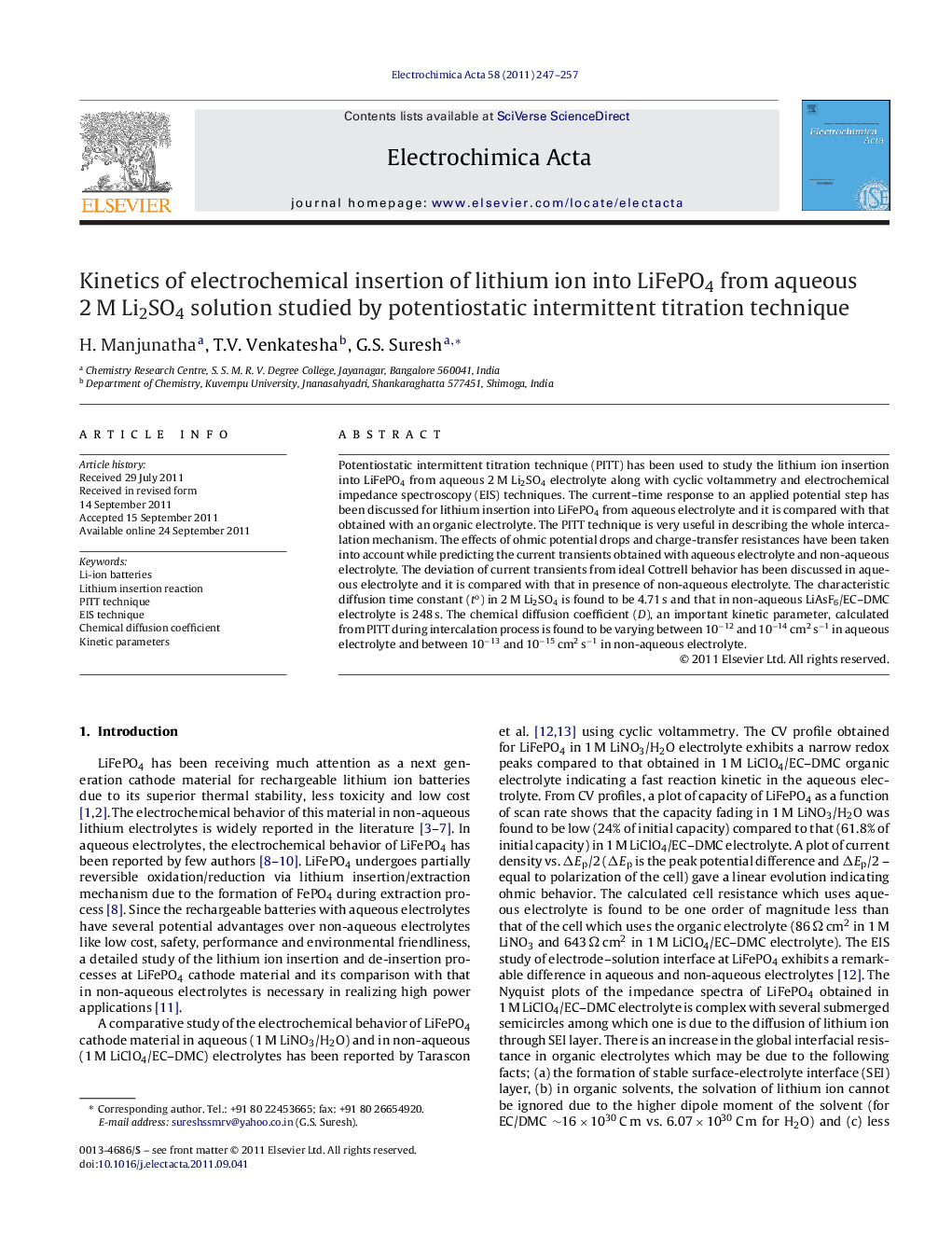| Article ID | Journal | Published Year | Pages | File Type |
|---|---|---|---|---|
| 189717 | Electrochimica Acta | 2011 | 11 Pages |
Potentiostatic intermittent titration technique (PITT) has been used to study the lithium ion insertion into LiFePO4 from aqueous 2 M Li2SO4 electrolyte along with cyclic voltammetry and electrochemical impedance spectroscopy (EIS) techniques. The current–time response to an applied potential step has been discussed for lithium insertion into LiFePO4 from aqueous electrolyte and it is compared with that obtained with an organic electrolyte. The PITT technique is very useful in describing the whole intercalation mechanism. The effects of ohmic potential drops and charge-transfer resistances have been taken into account while predicting the current transients obtained with aqueous electrolyte and non-aqueous electrolyte. The deviation of current transients from ideal Cottrell behavior has been discussed in aqueous electrolyte and it is compared with that in presence of non-aqueous electrolyte. The characteristic diffusion time constant (to) in 2 M Li2SO4 is found to be 4.71 s and that in non-aqueous LiAsF6/EC–DMC electrolyte is 248 s. The chemical diffusion coefficient (D), an important kinetic parameter, calculated from PITT during intercalation process is found to be varying between 10−12 and 10−14 cm2 s−1 in aqueous electrolyte and between 10−13 and 10−15 cm2 s−1 in non-aqueous electrolyte.
